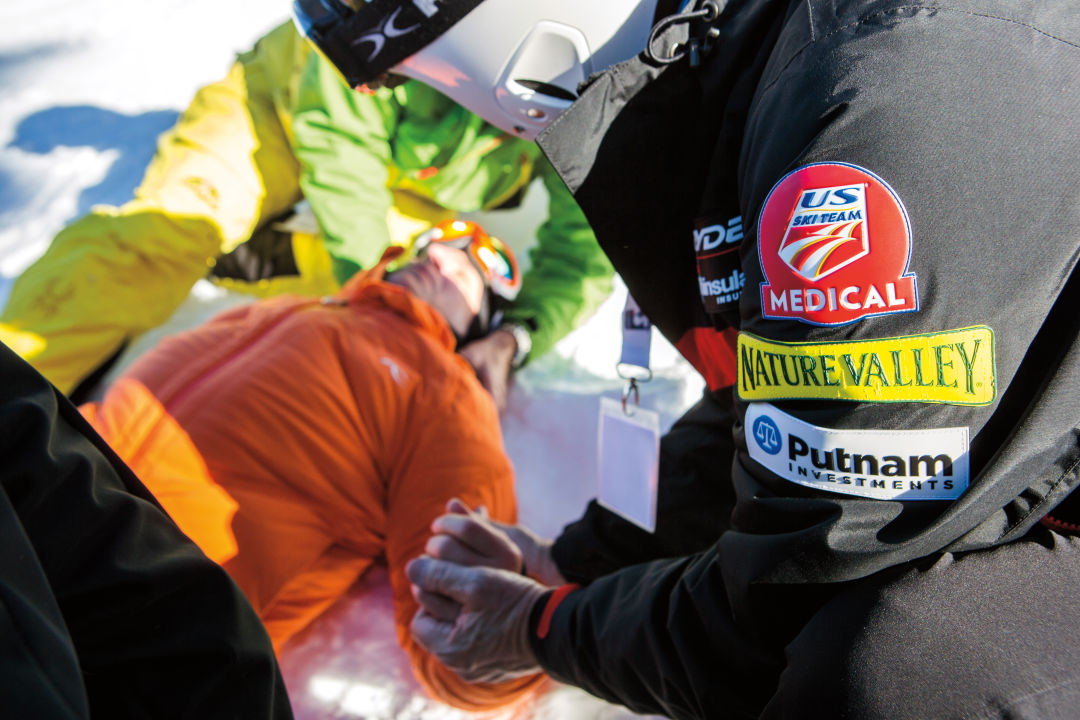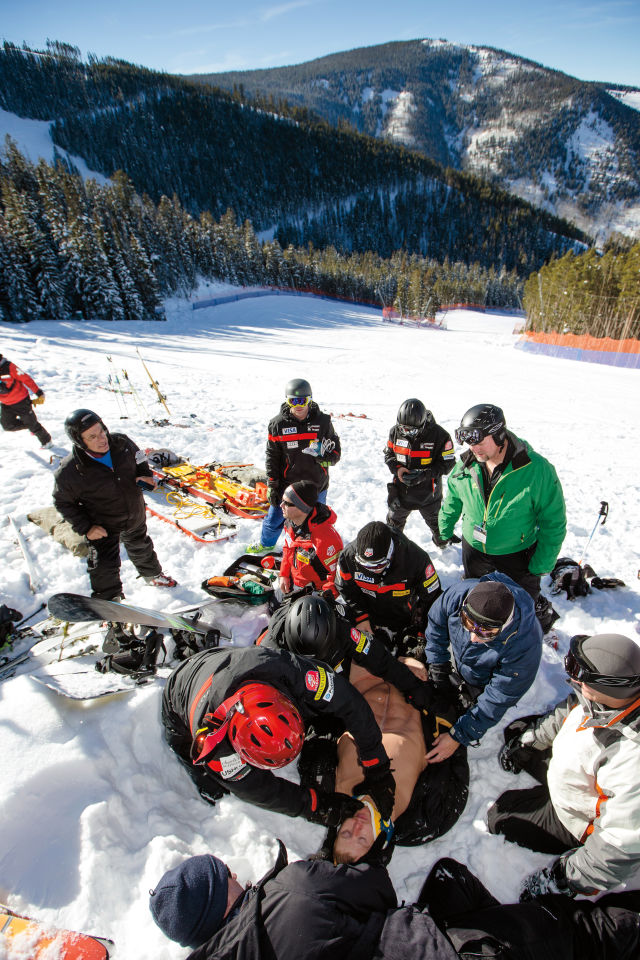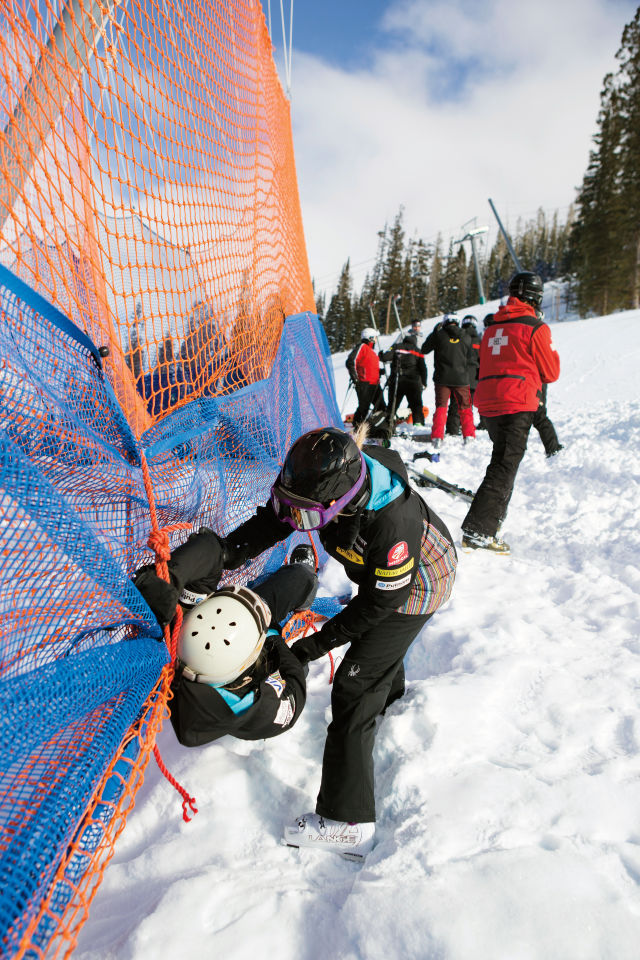Another Fine MESS

Image: Zach Mahone
Just after lunch on a brilliant Saturday in early December, five dozen of the finest doctors in the nation have gathered at the vertiginous lip of the Birds of Prey start. Most are wearing still-creased US Ski Team jackets tagged with complimentary lift tickets, looking dubious on rented skis or snowboards as they stare over the edge at the steep, rock-hard, iced-over race course.
For most, whether household names or anonymous, being here truly is a pinnacle, because they’ve just been named to the US Ski Team’s physicians pool, an elite cadre of 225 MDs who volunteer to travel with the team at their own expense and provide medical care if and when they’re needed. Upon selection and every four years thereafter, members are required to participate in the pool’s annual two-day training exercise called “Medical Emergencies in Skiing and Snowboarding,” MESS for short. Day One involves a first-responder refresher course taught indoors by paramedics, but Day Two has participants responding to six simulated critical injuries under the tutelage of ski patrollers—for the past decade, right here on the hill at Beaver Creek.
“Obviously, it’s a sort of play on words for us: it’s a big mess out there sometimes,” says Vail internist Larry Gaul, MESS’s cofounder and medical director and the head physician for the US Nordic team. “Before MESS, we’d have doctors show up, and their intentions were good, but their heads weren’t in the game because they’re not used to this environment. So we decided to start a course to teach them the basics of how to save a life out here.”

Image: Zach Mahone
Kyle Wilkens, the US Ski Team’s Utah-based medical director and a co-organizer of MESS, puts it this way: “We’re getting them out in the elements. If it’s 20 below, we’re up here doing this because that could be a race-day scenario. We get their gloves off and say, ‘You need to figure out how to do this with your cold hands, and you need to figure out how you’re going to get down this injected course.’”
At the 2012 scenario, one of the MESS instructors—a former military physician who trains Special Forces field medics—slid off the course and down an embankment. “I said, ‘This is our Iraq,’” Gaul recalls. “And he said, ‘Got it.’ It was an eye-opener.”
And today, behind goggles, all eyes are wide open.
At a Beaver Creek ski patroller’s command, the docs launch themselves down Birds of Prey—in a manner of speaking. Some edge sideways down the icy forty-five-degree slope; others snowplow like kids on a bunny hill. Halfway down the closed course, they arrive upon a surreal scene. The 2015 FIS Alpine World Ski Championships venue looks more like a battlefield in the mountains of Afghanistan; the slope is littered with a half-dozen bodies, medical students from Rocky Vista University playing the roles of wounded athletes, with gusto. They’re lying prone on the frozen course, tangled in B-netting, off in the trees. All are writhing and screaming, and some are wearing “cut suits,” body suits of latex skin and muscle and plastic bone that course with artificial blood summoned via remote-controlled electric pump.

Image: Zach Mahone
As the trainees click out of their bindings to tend to the wounded, Gaul stands atop the run, surveying the scene like a 10th Mountain Division commander, while Wilkens circulates from scenario to scenario. Both will be traveling with the US Ski Team in Sochi, which, spoken or not, is on the mind of everyone at today’s exercise.
“The docs—some of them are world famous—are way out of their element here,” Gaul says. “It’s a matter of teaching them how to work in our sandbox.”
Adds Wilkens: “The final product is that we have doctors who are trained to take care of athletes on the hill, which in turn gives our athletes the confidence to push the limits of their training. There’s no doubt in their minds: they know somebody’s got their back.”
And someone who, if needed, can mend it.






































